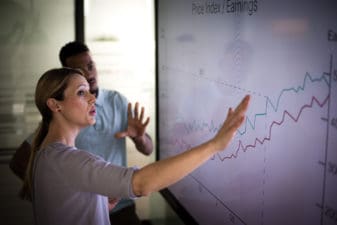If you’re a married Canadian, you can claim many tax breaks that single Canadians cannot. These include the spousal tax break, income splitting, and several more. Over a couple’s lifetime, these credits can result in considerable tax savings. However, before you can save money from tax breaks, you need to claim them. In this article, I will explore one especially lucrative tax break for married Canadians – especially couples in which one supports the other financially.
Spousal amount
The spousal amount is an amount you can claim if you supported your spouse at any time during a given year, and their income was less than the basic personal amount. The way you claim it is, you report the amount by which the basic personal amount exceeded your spouse’s income last year, on your own tax form. In 2024, the basic personal amount was $15,705, so if your spouse earned $10,000, you can claim $5,705 this year. This amount is in addition to your own basic personal amount. So, the spousal amount is effectively an extra, partial basic personal amount.
How much you could save
Tax credits in Canada are 15%, so if you claim $5,705 like in the example above, you save $855 on your tax bill. The amounts will vary for the amounts you claim.
Investing money saved through tax breaks
If you save money by claiming tax breaks, you might as well invest it. There are two ways to invest money that you save with tax breaks:
- Use form T1213 to get your employer to withhold less taxes from your paycheques. This will reduce the amount of taxes you pay. If you reduce it by an amount that, spread over a whole year, equals the amount of your claimed tax breaks, you will not owe any tax as a result of doing this. If you’re self-employed, you can skip form T1213 and simply remit less money yourself.
- Simply keep paying the same amount of tax you’d have paid otherwise, as decided by your employer, and get a tax refund back at the end of the year.
Both of these methods give you cash to invest that you otherwise wouldn’t have. The first method gives you a higher paycheque throughout the year. The second gives you a lump sum to invest later. Given that most experts recommend investing at intervals rather than in lump sums, and that inflation usually makes future money worth less than present money, method #1 is clearly better. However, method #2 is easier to implement.
Once you’ve saved some money, you’ll want to invest in assets. There are many asset classes to consider: dividend stocks are a good one. Take Fortis Inc (TSX:FTS), for example. Fortis is a Canadian utility stock with a healthy balance sheet (e.g., not that much more debt than equity), a collection of regulated utility assets, and a stellar dividend track record (52 consecutive years of dividend hikes).
How has Fortis achieved this track record of stability? It comes down to several factors. First, in an industry known for high payout ratios, Fortis has always kept its payout ratio well under 100%. Second, the company has done a fair amount of investing in growth over the years. Third, the company has kept its debt reasonably under control. Fourth and finally, it enjoys the advantages that utilities as a whole enjoy, such as cyclicality and stable revenue. It has all added up to a great run.









